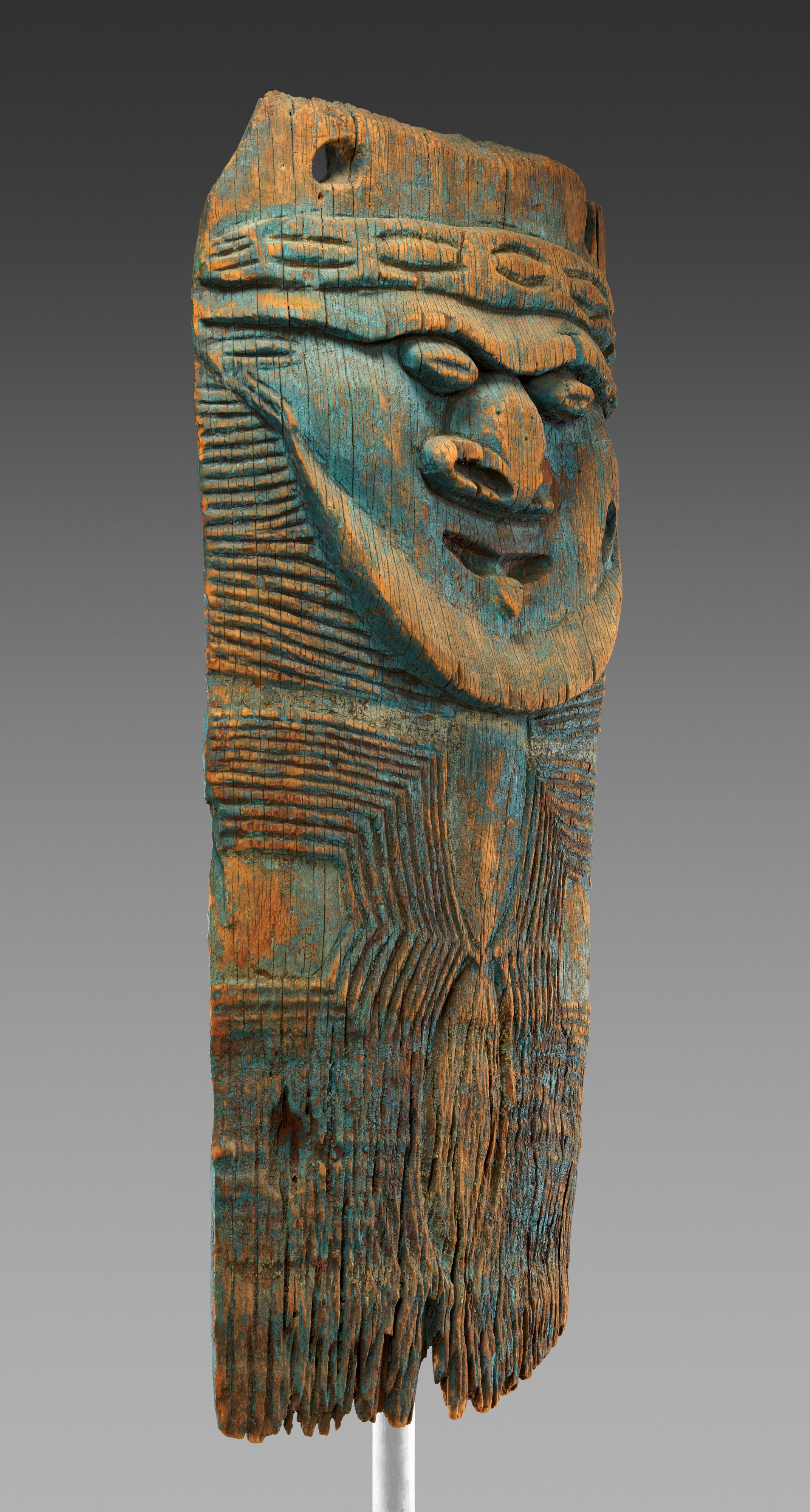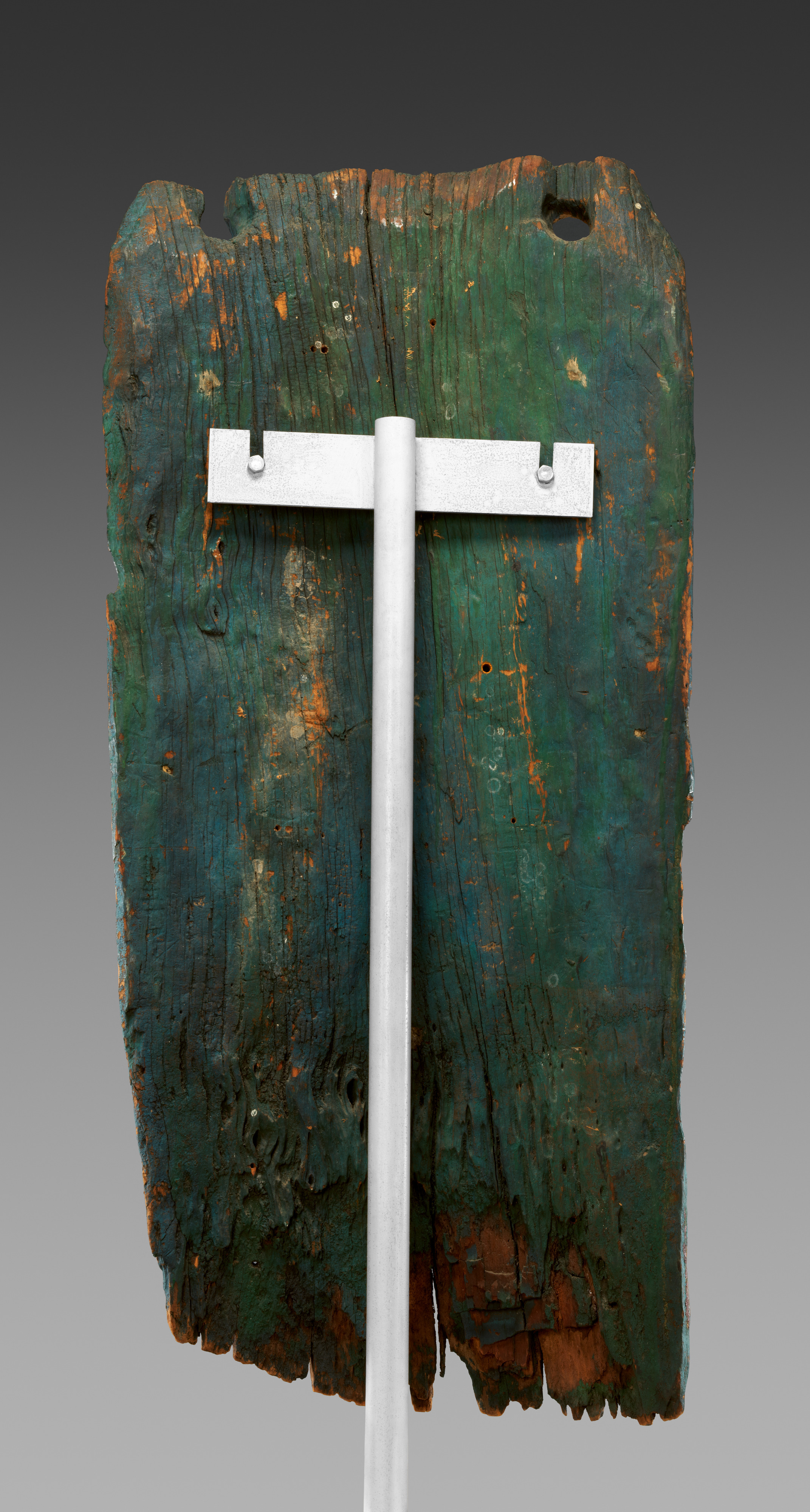Door board (jovo)
Not on view
Architectural carvings such as this pair of door boards (jovo or tale) are one of the primary forms of expression of the Kanak people of New Caledonia. Each of these rectangular, relief-carved door posts from New Caledonia is cut from a single panel of wood. The upper portion depicts an anthropomorphic face, likely the representation of a particular ancestor or the portrait of a recently departed chief. Each of the faces conform to a stylistic template common to the region and feature a prominent broad-based nose with large hollowed nostrils, large raised almond-shaped eyes which are set close under the ridge of the brow above, prominent raised cheeks and a mouth with parted lips as if breathing out or speaking. This pair also have the distinctive feature of an extended tongue that may be a reference to speech and oratory, an important skill demanded of leaders. A crescent-shaped flat panel extends below the mouth and spans out at an angle to represent a beard - a signal of age and wisdom, also singular attributes appropriate to the success of a leader. The ears are rendered as V-shapes and carved in raised relief at either side of the face and a notched band crosses each forehead with a simple pattern that evokes the fiber cord which headmen were accustomed to wear as an element of their coiffure. At the top edge of each plaque, two circular perforations indicate where the door post would originally have been lashed and attached with fiber cord bindings to the architecture of the chief’s house. The lower portion of each panel features geometric patterning - serial, loosely zig-zagging concentric lines that fan out in serial lozenge shapes that extend down the length of the post. It has been suggested that carved designs on the lower sections of door boards may originally have been a representation of the torso with navel and ribs. This design element is now most commonly identified as a representation of the layers of textiles or mats which would have wrapped a high-ranking individual’s corpse in preparation for the suspension of his body in the rafters of the roof of the ceremonial house with which he was associated. Each of these boards has several layers of brown and black pigment or paint which has been used to accentuate certain design elements but the dominant color is a brilliant blue which is now unevenly distributed due to weathering. This blue color could have been added long after the use of the piece in its original context as a ceremonial house guard. This pair of door posts are particularly fine nineteenth century examples of the genre and were probably produced as a pair in the main island of Grande Terre in the archipelago known as New Caledonia. The distinctive carving style and treatment of the face with protruding tongue identify them as likely coming from the Xârâcùù and Ajië-arhö cultural areas of the island.
Kanak societies were formerly ruled by hereditary chiefs who held both political and spiritual authority and were highly invested in maintaining productive links with the ancestral forbears of the village. The house of the chief was located at the center of every Kanak village and was designed to embody both the physical and metaphysical aspects of his ancestral authority. They were large circular structures with towering conical roofs, crowned with carved finials that were visible from afar. The entrances and interiors of chief’s houses were highly embellished with a variety of sculptural elements that included elaborately carved door boards, like these, that flanked the principal doorway. Carved as separate elements, door boards were lashed at each side of the entrance to the massive supporting posts and attached with lengths of fiber that passed through large holes; the bases of door boards were embedded directly into the ground. Almost all surviving Kanak door boards depict human images with short, broad heads and rectangular bodies adorned with geometric designs. Carved in pairs, they portray recently deceased high-ranking individuals (which could be male and female) who on death had gained ancestor status. They were a tangible means of manifesting the presence of ancestors amongst the world of the living and were placed prominently in the chief’s house where the ritual protocols that governed interaction between the two complementary, yet opposed, realms of the living and the dead take place.
Due to rights restrictions, this image cannot be enlarged, viewed at full screen, or downloaded.
This artwork is meant to be viewed from right to left. Scroll left to view more.




